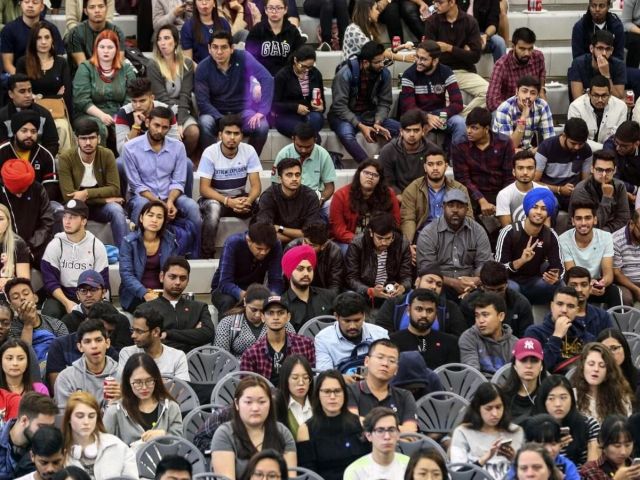
New Delhi, Jan 23 (IANS) Migrant and student advocacy groups in Canada have slammed a two-year cap on new study permits for international students, saying that immigrants are being “scapegoated” for the country’s aggravating housing crisis.
The cap, announced by Immigration Minister Marc Miller on Monday, is expected to result in approximately 3,60,000 approved study permits this year — a 35 per cent reduction from 2023.
The government crackdown comes as the number of international students in Canada crossed over a million, nearly three times what it was 10 years back, reportedly leading to accommodation shortages, high rentals, and a rise in the cost of living across the country.
According to Migrant Workers Alliance, a Canada-based advocacy group, International students and migrants “need rights, not caps”.
“All of us in Canada are facing overwhelming bills and exorbitant rent because of price-hikes, failures of government policy, and runaway profiteering. And yet it is immigrants who are being scapegoated,” said Sarom Rho from the Migrant Workers Alliance for Change.
“Housing prices went up even when the border was closed during COVID-19. Capping immigration is not a solution, prices will remain high, and all today’s announcement does is cede to racist ideas and hurt working-class people and their families.”
According to Statistics Canada, nationwide rents rose to 7.7 per cent in the country in December, 2023.
Expressing concern over the cap, Universities Canada said in a statement that the new process could mean prospective students choose other countries to pursue higher education.
“We are concerned that the cap per province is going to add stress on an already stressed system and until more information is provided as to how each province will be rolling out this new program, it is difficult to comment on its effect on Canada’s universities,” the group said in a statement published on Global News
Miller further said that from September, Canada will no longer issue post-graduate work permits (PGWPs) to students studying under curriculum licensing arrangements, stating that these programs are notorious for lacking oversight and do not provide quality academic experience.
“This does not fix the failures of the massive expansion of such get-rich institutions to which recruiters will continue to funnel vulnerable students. There must be a single system in which schools that are eligible for study permits should also be eligible for post-graduate work permits., If the school is not good enough for a post-graduate work permit, it simply should be closed down,” the Migrant Workers Alliance for Change said in a statement.
A PGWP allows one to remain in Canada and work full-time upon completion of a certificate, diploma, or degree programme that is at least eight months in length.
Valid for between eight months to three years, they allow the holder to work for any employer, for as many hours as they wish, anywhere in Canada.
In addition to the two-year cap, Miller also announced that in the week ahead families of international students who are not in graduate-level studies will be banned from being in the country.
“This is cruel mass family separation. It must be reversed,” Rho said.
Steven Meurrens, a Canadian immigration consultant, said the country is aligning with the UK by narrowing open work permit eligibility for spouses of international students “only” to those in master’s and doctoral programs.
While uncertainty remains about the impact on approved study permit applicants yet to arrive, or those in processing, more changes are expected in the coming weeks, Meurrens, who is associated with law firm Larlee Rosenberg, said.
Much of Canada’s population growth — now one of the fastest in the world — comes from foreign students, non-permanent residents, and temporary foreign workers.
International students contribute about CA$22 billion ($16.4 billion) annually to the Canadian economy.
As per the country’s 2022 official data, a huge majority — about 40 per cent — of foreign students come from India, followed by China at about 12 per cent.
The North American nation accepted 454,590 new permanent residents over the 12-month period to October 1, while bringing in a record 804,690 non-permanent residents, which includes temporary workers, foreign students, and refugees.
Prime Minister Justin Trudeau’s government opened its doors to immigrants to replace aging workers and fill labour gaps.
According to predictions by Montreal-based Desjardins Securities, closing doors to temporary workers and foreign students allowed into Canada would blunt the country’s economic recovery and deepen the recession.




